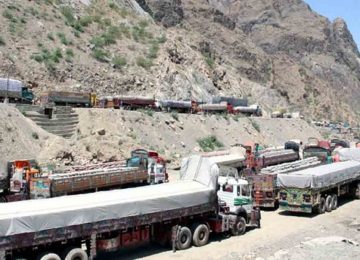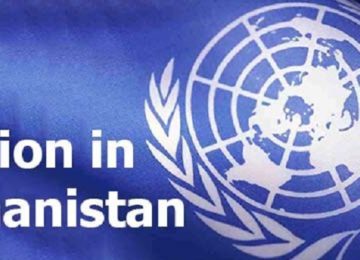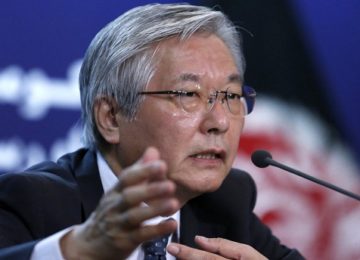SIGAR (Special Inspector General for Afghanistan Reconstruction) recently released its report on the lessons learnt by the US during its private sector development in Afghanistan since 2001. The report focuses on the work done by U.S. Agency for International Development (USAID), along with supporting tasks performed by the Departments of State, Defense, Commerce, and Treasury. One of the key findings in the report, as noted by a former US official, states that many of the ‘Afghan warlords became multimillionaires overnight. They had access and control. Powerful people were the ones controlling access to markets, including inputs and labor markets’. The report further notes that initial ‘optimistic reports’ on Afghanistan’s economic gains, soon after the US invasion, were mainly due to ‘immediate post-conflict recovery and the large infusion of foreign spending’, and therefore such indicators were not sustainable in the long run. Finally, it was also found that the US government did not engage in extensive planning for a post-Taliban Afghanistan as Washington neither had time nor any incentive to do so.
Below are some of the major highlights of the report:
— Afghan private sector development efforts didn’t reflect the reality of the country’s economic and security environment, the capacity of its institutions, its relations with its neighbors, or the impact of corruption.
— Optimistic projections for the pace and level of progress did not reflect the realities of the Afghan economy and operating environment, the ongoing conflict, and the capacity constraints of Afghan and U.S. institutions.
— Afghanistan’s early economic gains were largely due to an immediate post-conflict recovery and the large infusion of foreign spending, and therefore were not sustainable at those initial levels.
— U.S. financial aid practices, at times, encouraged corruption, complicated the challenges of coordination within and between U.S. agencies, and kept non-viable Afghan enterprises afloat.
— The U.S. government and stakeholders failed to understand the relationships between corrupt strongmen and powerholders, and the speed at which Afghanistan could transition to a Western-style market economy.
— The implicit toleration of corruption and often unintentional U.S. support for corrupt officials undermined support for private sector development initiatives from the Afghan population.
— An unrealistic view of what was possible in a conflict environment encouraged the setting of unrealistic goals, which in turn resulted in an inefficient use of resources on projects that did not deliver on their objectives.
— Senior technical experts often lack expertise in Afghanistan or even in post-conflict or developing economies, and were unable to provide effective guidance and support.
— The simple existence of laws and regulations is insufficient; it is how they are implemented by courts, government officials, and police that matters. Many laws introduced to promote economic activity were not accompanied by plans to build or modify the institutions needed to apply them, and Afghanistan’s weak judicial system left even the best-crafted laws vulnerable to manipulation.
— The U.S. government’s provision of direct financial support to enterprises sometimes created dependent, commercially nonviable entities, as well as disincentives for businesses to use local financial and technical services.
— Reductions in growth resulting from the 2014 political and security transition confirmed the lack of sustainability of an economy largely dependent upon the presence of international advisors and financial aid.
— Assistance provided to Afghan institutions and firms relied mainly on Western technocratic models that often failed to consider how powerful Afghan social groups and institutions influenced public policy and the functioning of markets.
— Due to a lack of understanding and uneven enforcement of market principles, the market economy was conflated with unfair competition, monopolization of markets by politically well-connected firms, unfair trade practices by regional neighbors, and administrative corruption.
— Rapid opening up to trade allowed Afghan consumers access to cheaper imported goods, but the opening of the country’s borders before Afghan goods were competitive with imports hurt domestic producers.
— Afghanistan’s imports in 2017 outweighed its exports by a ratio of seven to one due to factors such as poor trade governance, institutional dysfunction, poor infrastructure, low productivity, low levels of human capital, and low value added.
— Fear of government regulatory and tax-collecting institutions reinforced Afghan firms’ historical inclination to stay informal and small rather than risk expanding, hampering both government revenues and private investment.
— There was no overarching mechanism for targeting endemic poverty, and despite economic growth, estimated poverty, unemployment, and underemployment were not substantially reduced.
— Above all else, the private sector needed stability and certainty to develop, and their overall absence limited foreign and direct investment.
Full report: https://sigar.mil/pdf/lessonslearned/SIGAR-18-38-LL.pdf
Remarks: https://www.sigar.mil/pdf/speeches/SIGAR_USIP_Speech_2018-04-19.pdf
Photos: https://www.flickr.com/photos/sigarhq/albums/72157695765009825
Disclaimer: Views expressed on this blog are not necessarily endorsed or supported by the Center for Research and Security Studies, Islamabad.








